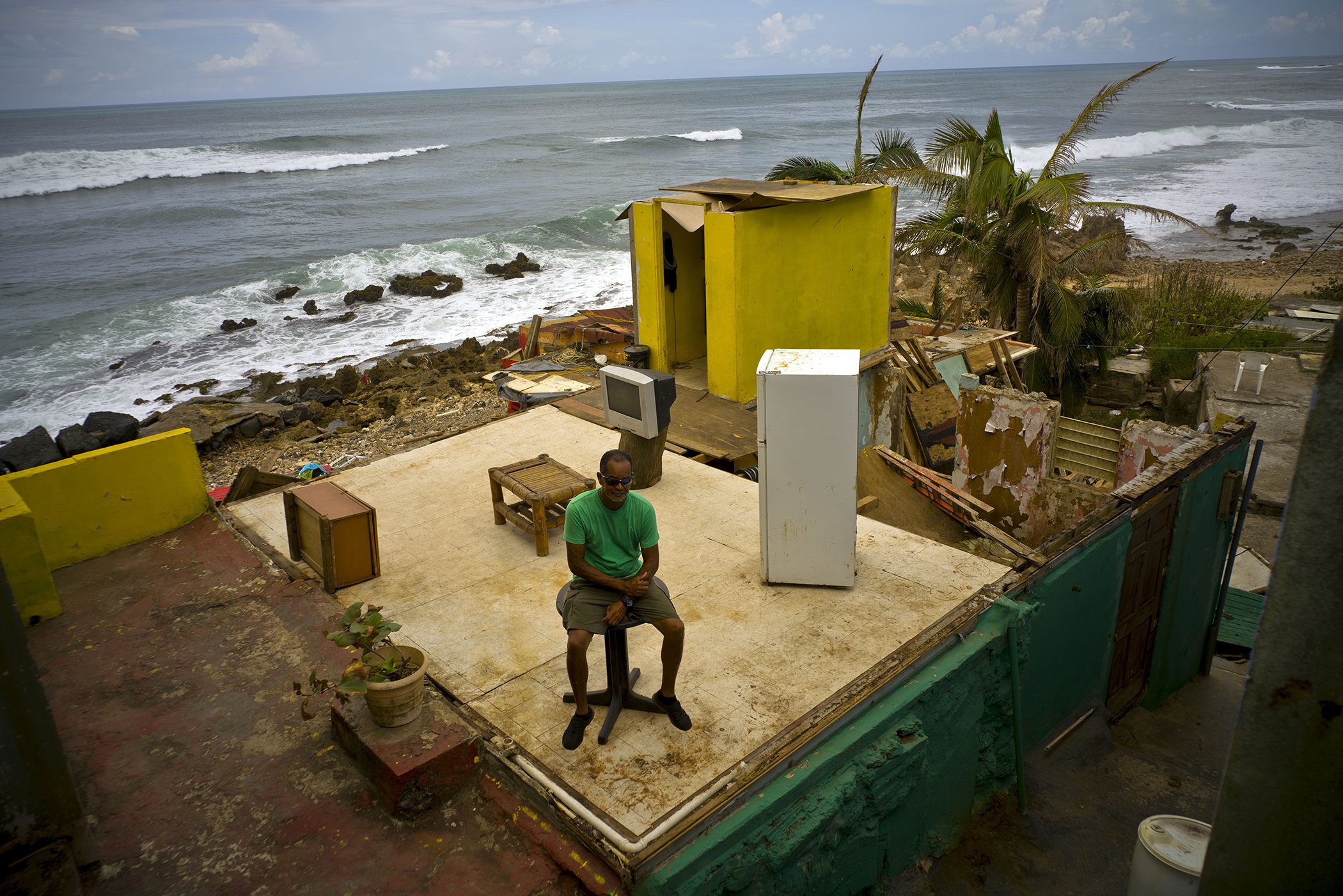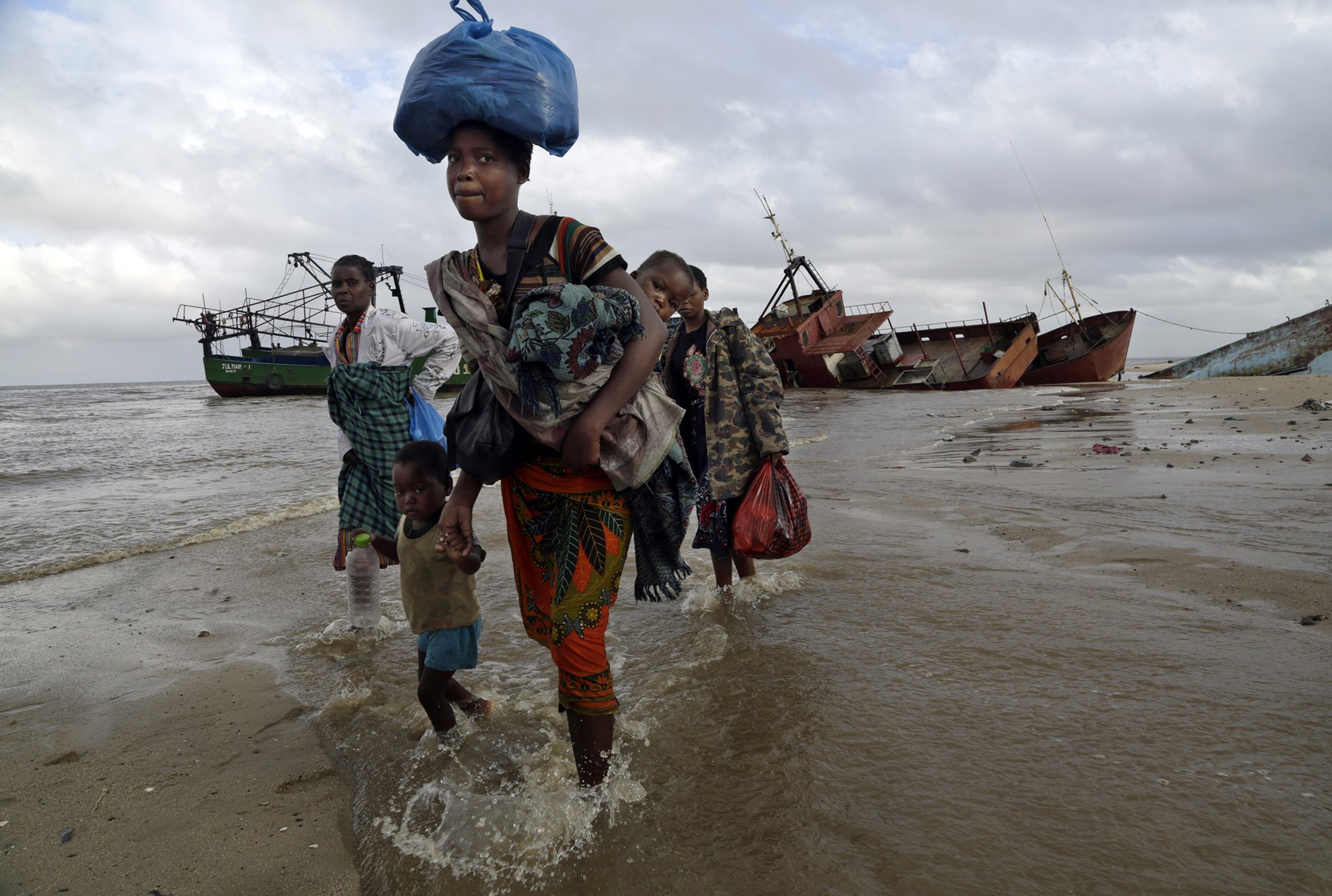An estimated 480,000 people were killed by roughly 11,000 extreme weather events between 2000 and 2019, according to a report by the think tank Germanwatch.
The catastrophic toll of extreme weather falls primarily on developing countries that lack the infrastructure and resources to cope with the impact. In fact, eight of the 10 countries most affected by extreme weather during this period are categorized by Germanwatch as low- or lower-income.
The report coincides with the first-ever Climate Adaptation Summit on Monday and Tuesday, during which world leaders discussed the urgent matter of adapting to the escalating consequences of climate change. Germanwatch noted that the vast majority of climate financing worldwide goes to mitigation efforts, and that the little that does go to adaptation efforts mostly funds initiatives in high-income countries. The Green Climate Fund strives to level this imbalance by raising $100 billion annually for climate financing in low-income countries, but this target, even if reached, is insufficient to address current and projected needs.
“The Global Climate Risk Index shows that poor vulnerable countries face particularly great challenges in dealing with the consequences of extreme weather events,” David Eckstein, senior adviser on climate finance and investments at Germanwatch, said in a press release. “They urgently need financial and technical assistance.”
The countries and areas most affected by extreme weather over this period were Puerto Rico, Myanmar, Haiti, the Philippines, Mozambique, the Bahamas, Bangladesh, Pakistan, Thailand, and Nepal.
Extreme weather events are devastating in their immediate impact and often for years afterward.
Hurricane Maria struck Puerto Rico in 2017, killing nearly 3,000 people, displacing tens of thousands more, and destroying infrastructure throughout the island. The economic cost of the storm was estimated at $43 billion.
 Roberto Figueroa Caballero sits on a small table in his home that was destroyed by Hurricane Maria in La Perla neighborhood on the coast of San Juan, Puerto Rico on Oct. 5, 2017.
Roberto Figueroa Caballero sits on a small table in his home that was destroyed by Hurricane Maria in La Perla neighborhood on the coast of San Juan, Puerto Rico on Oct. 5, 2017.
Roberto Figueroa Caballero sits on a small table in his home that was destroyed by Hurricane Maria in La Perla neighborhood on the coast of San Juan, Puerto Rico on Oct. 5, 2017. Figueroa, who wanted to stay at home with his dog during the storm, said he was evicted by police and taken to a shelter for the night. When he returned the next day and saw what was left of his home, he decided to put his salvageable items back where they originally were, as if his home still had walls, saying that it frees his mind.
Cyclone Idai slammed into southern Africa in 2019, killing hundreds, destroying farmland, flooding hundreds of thousands of homes, and damaging infrastructure.
Cyclone Nargis made landfall in Myanmar in 2008, killing 84,500 people in what became the deadliest tropical storm in the millennium so far.
The impact of these storms can still be felt today. In 2019 alone, extreme weather events caused $2.56 trillion in damages, according to Germanwatch.
“Poorer countries are hit hardest because they are more vulnerable to the damaging effects of a hazard and have lower coping capacity,” Vera Kuenzel, senior adviser on climate change adaptation and human rights at Germanwatch, said in the press release. "Countries like Haiti, the Philippines, and Pakistan are repeatedly hit by extreme weather events and have no time to fully recover before the next event hits. Thus, strengthening their resilience must not only address adaptation, but also provide necessary support for dealing with losses and damages.”
In the years ahead, extreme storms are expected to become more common and frequent as temperatures increase and sea levels rise. These supercharged storms could dwarf the impact of earlier storms, especially if countries do not invest in adaptation measures today.
 A displaced family arrives after being rescued by a boat from a flooded area of Buzi district, 200 kilometers (120 miles) outside Beira, Mozambique, on March 23, 2019.
A displaced family arrives after being rescued by a boat from a flooded area of Buzi district, 200 kilometers (120 miles) outside Beira, Mozambique, on March 23, 2019.
A displaced family arrives after being rescued by a boat from a flooded area of Buzi district, 200 kilometers (120 miles) outside Beira, Mozambique, on March 23, 2019.
Adaptation measures are country-specific but, broadly speaking, they boil down to reinforcing infrastructure, strategically relocating vulnerable populations, investing in high-risk communities, and developing emergency relief plans and procedures. Sometimes emergency adaptation measures become so costly they no longer make sense. Indonesia’s government, for instance, chose to relocate the capital from Jakarta to the north of the country because of rapidly advancing sea levels.
Adaptation also covers other climate impacts such as droughts and heat waves. Agricultural hotspots are increasingly under pressure from rising temperatures and dwindling water supplies. To protect food supplies for growing populations, countries will have to invest in smallholders farmers to ensure they can keep growing crops in the years ahead.
Much of this financing will have to come from high-income countries that are largely responsible for the climate crisis. Because of the interconnected nature of economic systems, investing in global adaptation is in the best interest of all countries.
"The global COVID-19 pandemic has reiterated the fact that vulnerable countries are exposed to various types of risk — climatic, geophysical, economic and health-related — and that vulnerability is systemic and interconnected," said Laura Schaefer, senior adviser on climate risk management at Germanwatch, in the press release.
“It is therefore important to address these interconnections,” she said. “Strengthening the climate resilience of countries is a crucial part of this challenge. The Climate Adaptation Summit offers the opportunity to take an important step in this direction."